I am going to show you the LM317 lead-acid battery charger circuit. I like this type of battery because of so cheap. You too, right?
These lead-acid battery charger circuits are for 6V, 12V, and 24V batteries. Although there are many methods to choose from. But you may be missing If not read this post to the end.
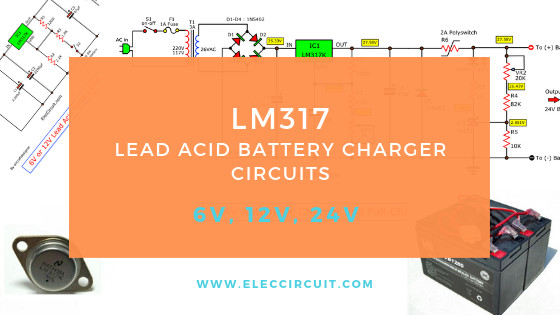
Often I like to use the LM317 power supply. Because it is so easy to use, with a few parts. And importantly cheap, too.
Why use LM317?
If your main goal is to use the battery for a long time. You have enough backup batteries. For your work without interruption.
Did you know we can recharge batteries almost five hundred times? But must be recharged with the correct method.
It is easy.
Manufacturers always print the appropriate voltage and current for charging the battery.
The important thing is heat while charging the battery.
It is natural for electronic parts. If it is hot. It has a short life. The battery, too.
And the heat is caused by the voltage and current levels are too high
Most problem is too high a voltage level. Should not normally exceed 14V.
When we use LM317 to maintain a constant voltage. So, It is great.
Of course, these circuits below is not an instant circuit. Perhaps great ideas may be the best ways for you to improve your electronics skills.
Note: Though this project is good. But it may difficult to build and expensive. I love these projects better: Simple auto cut off 12V battery charger
Here are 4 circuit ideas. Ready to get started?
Note: Very important, friends should choose a good quality LM317.
Check out the LM317 on Amazon
6V-12V Lead Acid battery charger using LM317
Imagine you have both batteries 12V and 6V. You may be interested in this lead acid battery charger circuit.
Because…
It can charge both 6V and 12V two in one by choosing of S2-switch.
Look: in the circuit below.
At output current max 1.5A as limiting current of LM317K.
Recommended: Recycle Free Li-ion battery from E-waste
How it works
When you see the circuit. It looks like a DC voltage-regulated power supply using LM317. Some love this circuit. any circuit requires energy.
In the first section, T1, S1, D1-D4, C1, and C2 are unregulated power supplies. Do you know about them? I guess you will understand. And you may read it more.
They will reduce the AC main voltage down to 21V DC.
Have you ever wondered about the value of these parts?
Yes, the designer has an interesting concept. I like 2 things.
Transformer—when we use 1.5A output current. So should 2A transformer. And the output voltage is about 15VDC (approximately).
So, the input voltage of LM317 should be about 17V to 22V DC. Because if over-voltage it is easy to hot. But too low does not keep a constant voltage well.
Filter Capacitor—We need full output power and low ripple voltage. According to basic principles, we should use the capacitance of C1 and C2. The 2,200uF per 1A input. So, the filter capacitor is 4,400uF(2,200uF+2,200uF).
Then, see in LM317 Regulator section. We know to change R3 and R2 to set the output voltage. Which control with S2.
- Closed switch S2 for 6V battery charger. —See R2 and R3 connect together in parallel. It makes the output voltage is about 7 volts.
- Opened switch S2 for 12V battery. In contrast, R2 runs only is high resistance than two. So, output voltage is about 14 volts.
Are you understand?
Recommended: Simple Li-ion Battery Charger Circuit with Automatic Cut-Off
The diode D3 and D4 help protect a reverse voltage from an output load. It will over-current up until the fuse is blown. And protect charging with the wrong polarity.
Parts you will need
IC1: LM317K Variable voltage regulator TO-3
D1-D4: 1N5402, 3A 200V Diodes
D5,D6: MBR1545 Schottky Diodes & Rectifiers 16A
C1,C2: 2,200uF 35V Electrolytes
C3: 47uF 25V electrolytic.
0.25W Resistors, 5% tolerance
R1: 220 ohms
R2: 2.2k
R3: 1.8K
S2: Toggle SPST Switch
S1: ON-OFF SPST switch
F1: Fuse 0.5A or 1A
F2: Fuse 2A
T1: 117V/230V AC primary to 15V,2A secondary transformer
See: LM317K pinout
12V lead acid battery charger using LM317K
Suppose that you have a Dry cell lead-acid battery, 12V 7.5hA sizes. And you need a battery charger, simple and economical. Also, you have an 18V unregulated power supply.
I recommend the circuit diagram below. It uses LM317K as the main too.
This circuit has the principle is simple. And can keep a stable voltage at 13.5 volts. By setting of R2 and R2.

You may use the current 1A to take time charging about 8 hours or 10 hours. Then, It will have full electric energy.
Also, the above circuit, has D1 protect a reverse voltage from an output load. With Furse blow to cut off the circuit.
See LED1 shows the correct polarity current connection. And D2 connected in reverse biased to show a wrong battery connecting.
Parts you will need
IC1: LM317K Variable voltage regulator TO-3
D1: MBR1545CT Schottky Diodes & Rectifiers 16A
C1: 2,200uF 35V Electrolytes
C3: 47uF 25V electrolytic
C2: 0.1uF 50V Ceramic capacitor
0.25W Resistors, 5% tolerance
R1: 220 ohms
R2: 43 ohms
R3: 2.2K
R4: 1K
LED1: Green 5mm LED
LED2: Red 5mm LED
F1: 2A Fuse
Automatic Battery Charger using LM317 circuit
This is a simple automatic battery charger circuit. When the battery voltage is lower than 13.4V, it will start flowing through R3 to charge the battery.
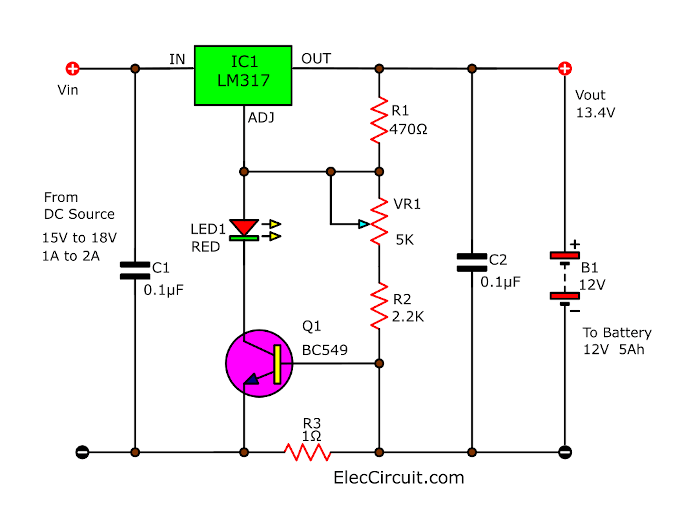
And when the battery voltage reaches 13.4V, the current will finally stop flowing. When we use the battery until the voltage drops below 13.4V, the current will start flowing automatically into the battery again.
Read more: Gel cell battery charger circuit
24V Automatic Charger and fully charged indicator
This is a 24V automatic charger circuit and a fully charged indicator.
Look:
Imagine you have a 24V battery, 10Ah. You can also use LM317K to build a 24V lead-acid charger circuit for this battery.
It requires a stable current of about 1.5A and 27V constant voltage.
They are similar to the above circuit.
Here is the step-by-step process.
First, it has an DC unregulated power supply, and 35VDC at 2A is across C1.
This is a voltage input of LM317K. Which can withstand voltage up to 40V.
Then, LM317 and other parts keep a stable voltage at 27V. We adjust VR1 to set this voltage.
When the battery is fully charged or using a current of more than 2A. The R6 is a polyswitch. It will cut off the current to the battery.
Full Charged indicator—when full charging the battery voltage up to 27V. The TL431 will recognize this voltage level. Then, turn on LED1 to light up immediately.
Also, above circuit, D5 protects a reversed voltage from the battery.
And, R6 cut off this current too.
IC1 should hold with a large heat sink.
Parts you will need
IC1: LM317K Variable voltage regulator TO-3
IC2: TL431 Precision Shunt Regulator TO-92
D1-D5: 1N5402, 3A 200V Diodes
C1: 2,200uF 50V Electrolytes
C3: 47uF 50V electrolytic
C2: 0.1uF 50V Ceramic capacitor
0.25W Resistors, 5% tolerance
R1: 220 ohms
R2: 4.3K
R3: 1K
R4: 82K
R5: 10K
LED1: Green 5mm LED
R6: 2A Polyswitch
VR1: 1K
VR2: 20K
LM317 Universal battery charger
Here comes a very simple idea the universal battery charger circuit.
When input power is applied to the circuit.
Note:
This is another concept of the LM317 battery charger. But I haven’t tried it yet. I keep this circuit. For future learning only.
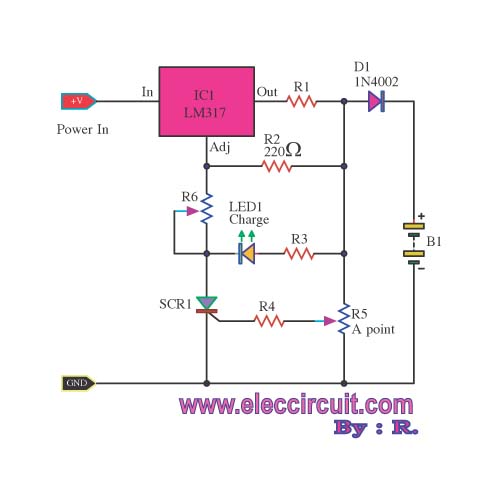
The SCR1 (Silicon controlled rectifier) turns off and then does not have a bias current path to ground.
The LM317 acts as a current regulator, It is connected to the battery through a one-way diode D1, limiting resistor R1, and a bias resistor R2.
The D1 prevents the circuit from battery discharging when the power is out from this circuit.
As the battery charges, the voltage across A point potentiometer R5 and some point rises, to turn on the SCR1.
Then current from the regulator LM317 can flow to the ground, so now the IC1 is in functions the voltage-regulating mode.
The R6 is used to control the output voltage.
When the SCR1 turns on, it also provides LED1 through R3 with a path to the ground.
But when LED1 is on, this circuit is in the voltage-regulating mode, while LED1 is off to be in the current-regulating mode.
You may like these circuits, too.
- LM317 2N3055 3A Variable power supply
- Converts power supply to the automatic battery charger
- How many amps & hours to charge a battery be full
GET UPDATE VIA EMAIL
I always try to make Electronics Learning Easy.
Related Posts

I love electronics. I have been learning about them through creating simple electronic circuits or small projects. And now I am also having my children do the same. Nevertheless, I hope you found the experiences we shared on this site useful and fulfilling.
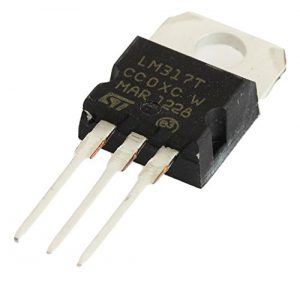
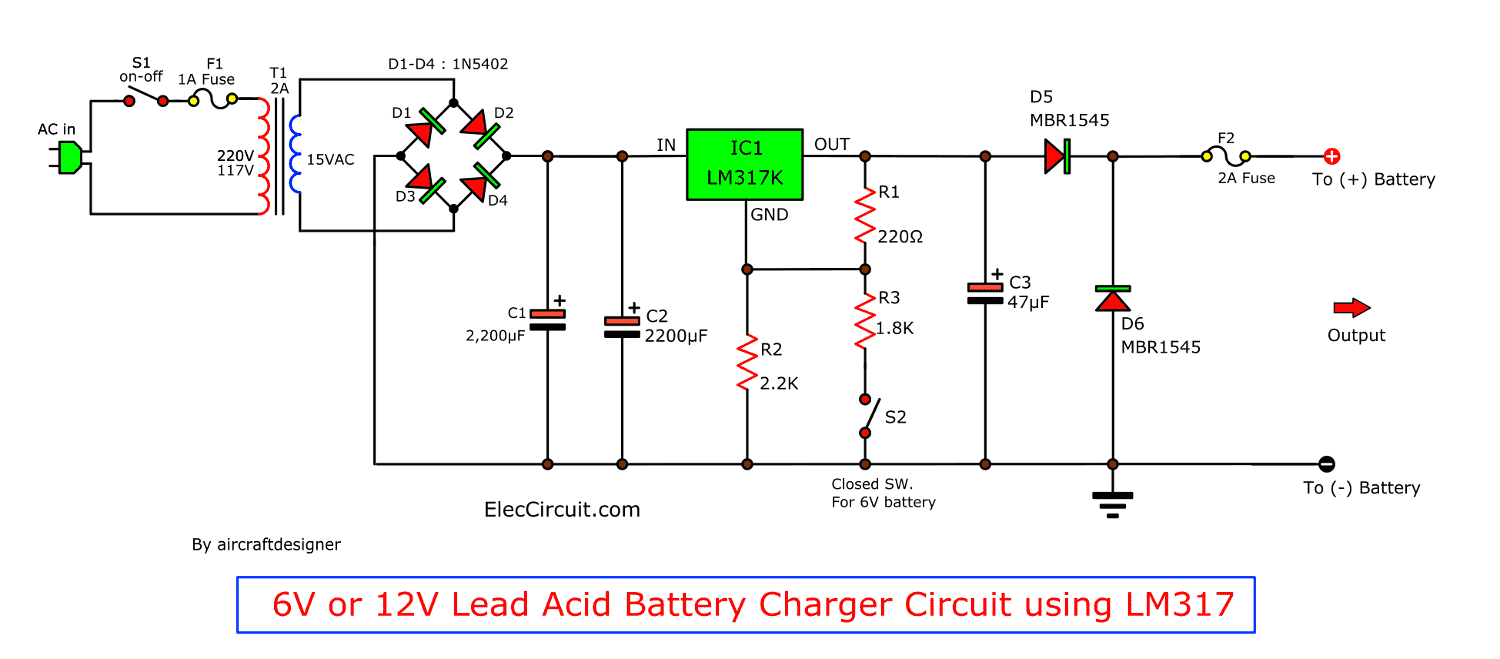
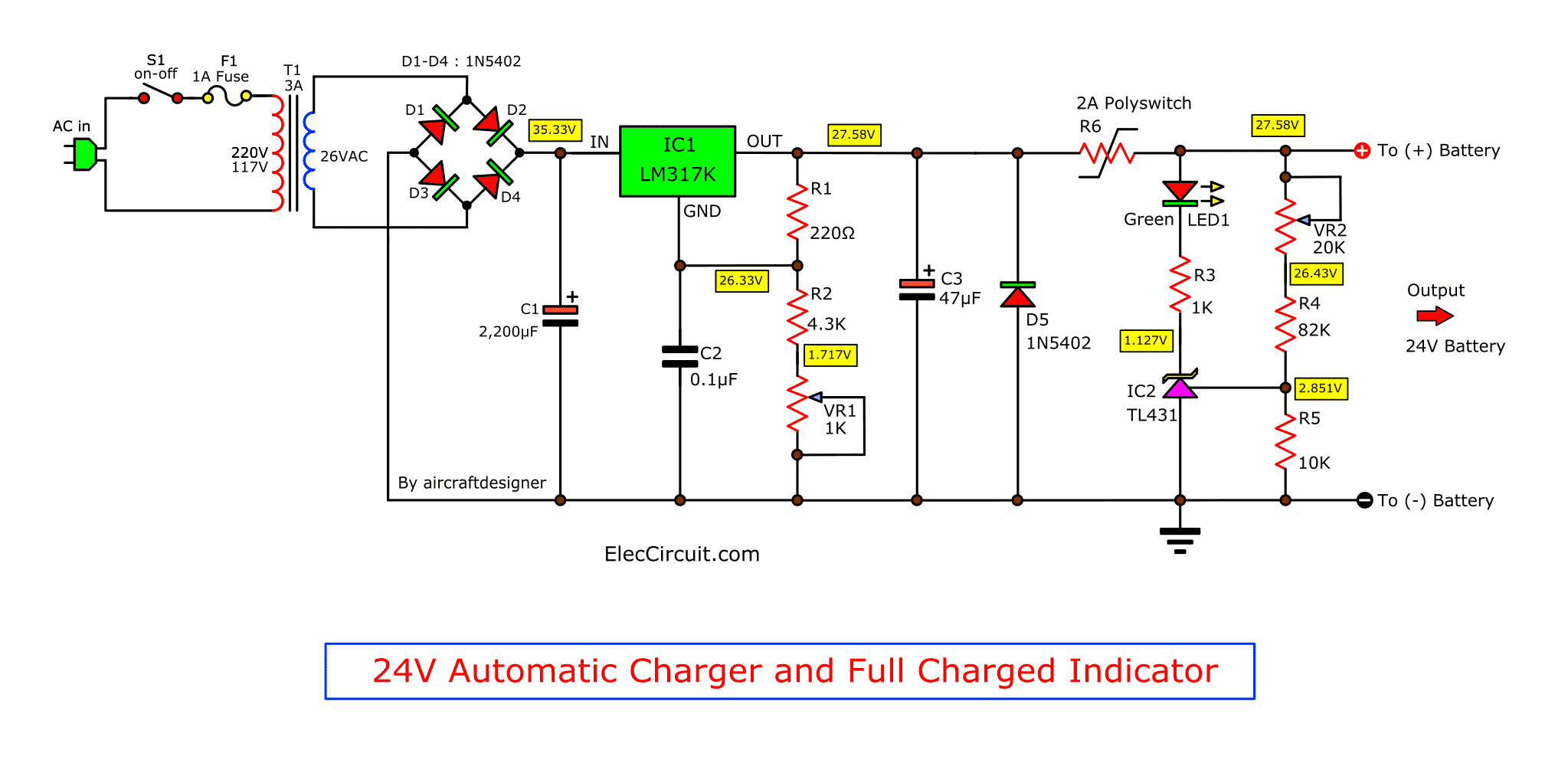
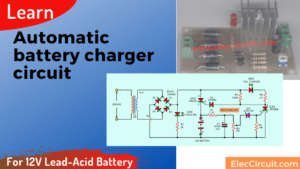
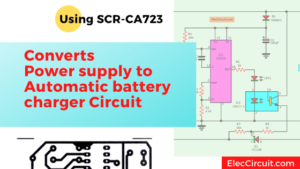
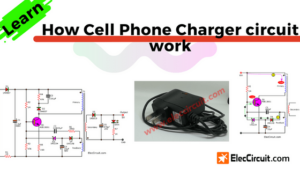
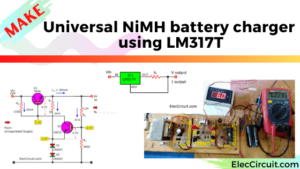
hi, can i leave this charger permanetly on the sla battery ? if not what changes would i have to make to do so ?
“The universal battery charger using Lm317”
Please explain that this charger is automatic or not. By automatic, i just mean that when battery voltage reaches a particular level, this charger will be off. and when the battery voltage reduces to a particular limit charger will starts charging. And 2 LEDs are indicating these two states.
Dear Sir,
Could you please help me with a circuit for 6v 12v automatic battery charger using 0-15v 5amps transformer, LM338 IC & ammeter and voltmeter etc (like a professional)
regards
Patrick
Hi there,
I built “12V lead acid battery charger by LM317K” and it’s working, but can someone explain me what does that GREEN Led, indicates full charged battery?
Thanks
Please can you explain why a power supply 12.5V DC stabilizer can not be use as batery chargerfor a sealed lead asid type battery?
Thank you Sarantis
Please can you explain why a 12.5 V dc power supply stabilizer can not be used as a battery charcher for a sealed lead acid type of battery?
Thanks Sarantis
No sarantis a 12.5 V dc power supply stabilizer can’t be used.That is becase you.ll need more voltage than 12 volts to charge a battery ,about 13,5-14,5 volts.
Dear Sir
I would like to ask you about the DC output current from the battery charger to charge 2 batteries (12v/250 AH )
the charger 24v-10A enough for this operation
Regards,
Ismail Abdallah
B.S.C electrical engineering
Respected sir, Please tell me the value & power of used component in The universal battery charger using Lm317. I Like this & this is very useful.
Thank You.
sir i have a doubt.l d charger turn off wen it is fully charged and how this happens
i have an IC named as LM317T. can i use this instead of LM317K?
Pls where can I get a detailed video of building these circuits, its not too straight forward for my level. Or can I get a more detailed explanation. Thanks
What values are you using for the universal battery charger using Lm317 ?
I have 6v 4.5ah old battery it shows 1.5v in multi meter. can i charge the battery..?
I have
out put 10v(10.9v) dc adaptor can i use
to charge the battery..?
I have another old
transformer(from old fm radio 1990) with center tapped it shots 5.5v ac and
0.02v ac . What do i do to charge the
battery..?
what is role of ic lm 317 k in lead acid battery charger?
I want to build the simple 6V or 12V charger for Lead Acid battery that must give an output voltage of 13.75V for charging the 12V battery. My circuit has the LM317K voltage regulator with R1=220 and R2=2.2k and I’m using a 220V/15V, 3A transformer as shown above. The explanation on the LM317T says that Vin must be at least 2.5 volts greater than the required output voltage to power the regulator. Is it possible then for my design to give out 13.75V., since 15V – 13.75V is just 1.25V which is clearly less than 2.5V ? I ask because the rms 15VAC secondary output of the transformer will also give approximately 15VDC from the full bridge rectifier.
I really want to build a simple but efficient dual purpose 6V or 12V charger, but it seems to me, from my question above, that this charger would be only efficient for 6V but NOT for 12V.
Pls reply asap.
Please reply asap.
Hi, Apiece
Thanks for your feedback.
You are correct.
I can charge 12v battery by 13.8v dc voltage.
Hi, Didier nsenga
Thanks for your feedback.
Please look at : https://www.eleccircuit.com/lm317-voltage-regulators/
For the circuit 2 above, 6V or 12V Lead Acid battery charger, what other diode other than the MBR1545 in the circuit can I use? Pls give me similar/equivalent diode to that MBR1545 because I couldn’t get it in my locality. By the way what is the use of those MBR1545 in the circuit 2 above?
Awaiting ur reply asap.
Thanks.
Hi, Apiece
Thanks for your feedback.
I am sorry , I not test this circuit.
But I think we can use any diode as power current output.
You can use 1N5402 or 3A 200V diode for output current maximum 3A.
If have results any please share us.
I want to make 100ah 2 volts sla battery charger please give me
hi..
i want to make a charger in automotive application for 12V input and 5V, 1A output please provide me a circuit diagram but that diagram should have protection like, over voltage, short circuit,EMI/EMC, ESD, i/p surge, over load.
blurr with your diagram..resistor 1/3/4..value..?
I like to know what the green an red led indicator doing by charging the SLA battery , can anyone let know pls ??? its look as reliable charger but the green an the red led are unknown for me what they indicate ,, full charged , floating charged , ???
hi, can i leave this charger permanetly on the sla battery ? if not what changes would i have to make to do so ?
can you tell me how to make automatic power supply charger for 4 pcs of 12 volt battery
you are truly a just right webmaster. The site loading pace is incredible. It sort of feels that you are doing any distinctive trick. Furthermore, The contents are masterwork. you’ve performed a magnificent job in this topic!
It’s very interesting.pls can I use it to charge 24v 200 to 500amp battery and how do I incorporate relay.also what do I use instead of that polyswitch cos of availability
Ola
Hello, Oladimeji Akinsanya
Thank you for visiting.
If you use a high current battery. You should use high current charging too. For example, 24V 200A. You need a current of 20A or 50A for 500Ah battery. So, this circuit cannot be used for them.
You do not tell the values of R1 THROUGH R6 except for r2 so how o we know hat values to use
Hello James Pittman Jr,
Let me tell you honestly. I have never built this circuit.
Therefore, I cannot clearly specify the equipment value. If I guess without caution You may be damaged.
But I believe You have the ability to design this circuit.
Thanks
Apichet
I need to construct a SCR based battery charger for charging 30 volt 100 AH lead acid battery and want float DC 30 vdc
Hello BASHEER KHATRI,
Thanks for your visit. Personally, I feel this circuit is not suitable for a high current battery.
Because It can charge only 1A current. If you use a 100AH battery, you should use a 10A current.
However, you may use a transistor use increase the current up and important high current of input, too.
Sir, can this circuit be used to charge Tractor Battery of 24Volts and 120Ah?
Hello Chandhra Mouleeswaran MK,
Thanks for your visit. In my view, this circuit can use only a low current of the battery, 20Ah below.
If your battery is 120Ah, I will charge in 10-12 hours. The charging current should be 12A min.
So, this circuit cannot power to it. It can give only 1A max.
But, Personally, I feel if used many transistors and LM317 may increase the current to use 12A output.
It’s just my guess. However, I believe you can.
Thanks
Thanks, Giuseppe!
Hi,
Thanks for your feedback. 🙂
I’m guessing there aren’t cheaper batteries availible with better, or comparible energy density?
Hi,
Yes, I agree like you said. My dad said that it has been popular for a very long time, more than 50 years, such as cars, motorcycles, etc. It’s cheap, Provides high electrical energy. But it was so big I couldn’t lift it. But it will continue to be usable. Because it is cheap and very popular in the market. And it can be recycled very easily. We will have more articles about this type of battery in the future, hope you will continue to follow us. 🙂
Hi, Apichet! The “Automatic battery charger using lm317 circuit” is soldered to protoboard, mounted in an enclosure and is up an running! It is charging a 12V, 9 amp hour, SLA battery!
Send email if you want pictures. 🙂
Thank you!
– Brock
Hello,
I am very happy with your success. Congratulations. I also like using LM317. It is really not obsolete.
It is nice that you want to share your project pictures.
Please send them to me. Thanks in advance for your friendship.
Have a great day,
Apichet